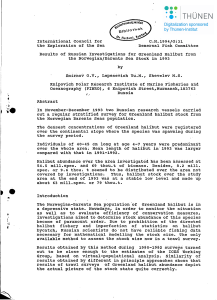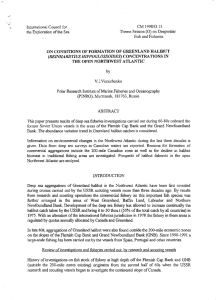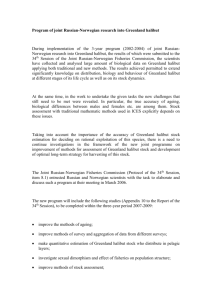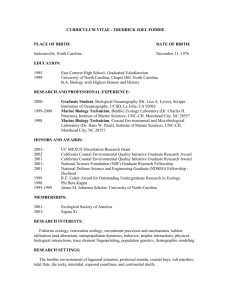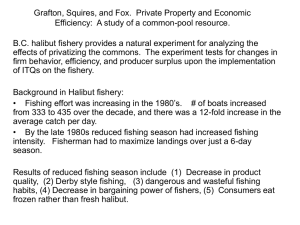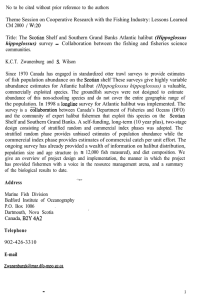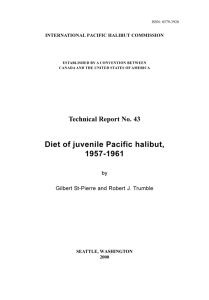Sea History 128: page 40
advertisement
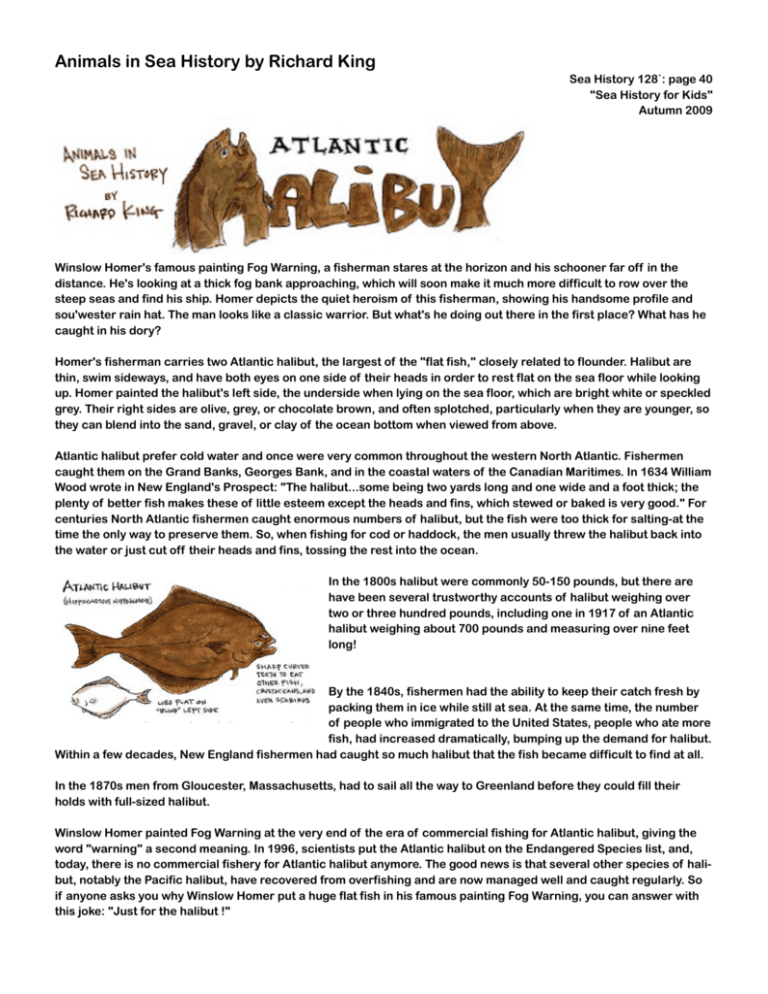
Animals in Sea History by Richard King Sea History 128`: page 40 "Sea History for Kids" Autumn 2009 Winslow Homer's famous painting Fog Warning, a fisherman stares at the horizon and his schooner far off in the distance. He's looking at a thick fog bank approaching, which will soon make it much more difficult to row over the steep seas and find his ship. Homer depicts the quiet heroism of this fisherman, showing his handsome profile and sou'wester rain hat. The man looks like a classic warrior. But what's he doing out there in the first place? What has he caught in his dory? Homer's fisherman carries two Atlantic halibut, the largest of the "flat fish," closely related to flounder. Halibut are thin, swim sideways, and have both eyes on one side of their heads in order to rest flat on the sea floor while looking up. Homer painted the halibut's left side, the underside when lying on the sea floor, which are bright white or speckled grey. Their right sides are olive, grey, or chocolate brown, and often splotched, particularly when they are younger, so they can blend into the sand, gravel, or clay of the ocean bottom when viewed from above. Atlantic halibut prefer cold water and once were very common throughout the western North Atlantic. Fishermen caught them on the Grand Banks, Georges Bank, and in the coastal waters of the Canadian Maritimes. In 1634 William Wood wrote in New England's Prospect: "The halibut...some being two yards long and one wide and a foot thick; the plenty of better fish makes these of little esteem except the heads and fins, which stewed or baked is very good." For centuries North Atlantic fishermen caught enormous numbers of halibut, but the fish were too thick for salting-at the time the only way to preserve them. So, when fishing for cod or haddock, the men usually threw the halibut back into the water or just cut off their heads and fins, tossing the rest into the ocean. In the 1800s halibut were commonly 50-150 pounds, but there are have been several trustworthy accounts of halibut weighing over two or three hundred pounds, including one in 1917 of an Atlantic halibut weighing about 700 pounds and measuring over nine feet long! By the 1840s, fishermen had the ability to keep their catch fresh by packing them in ice while still at sea. At the same time, the number of people who immigrated to the United States, people who ate more fish, had increased dramatically, bumping up the demand for halibut. Within a few decades, New England fishermen had caught so much halibut that the fish became difficult to find at all. In the 1870s men from Gloucester, Massachusetts, had to sail all the way to Greenland before they could fill their holds with full-sized halibut. Winslow Homer painted Fog Warning at the very end of the era of commercial fishing for Atlantic halibut, giving the word "warning" a second meaning. In 1996, scientists put the Atlantic halibut on the Endangered Species list, and, today, there is no commercial fishery for Atlantic halibut anymore. The good news is that several other species of halibut, notably the Pacific halibut, have recovered from overfishing and are now managed well and caught regularly. So if anyone asks you why Winslow Homer put a huge flat fish in his famous painting Fog Warning, you can answer with this joke: "Just for the halibut !"

